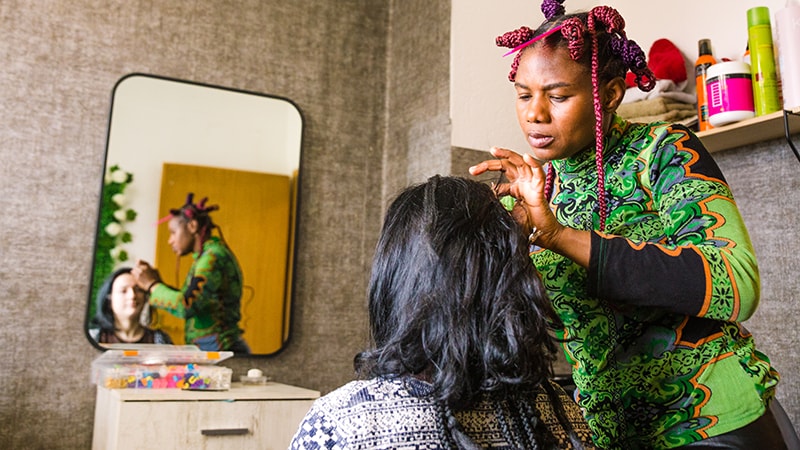Hair Stylists as Health Influencers in HIV Prevention Program
Основні поняття
Empowering hair stylists to promote HIV prevention among Black women.
Анотація
Women's sexual health discussions in beauty salons can be leveraged for HIV prevention.
- HEEAT Research Lab pilot program trained stylists to educate women on HIV prevention.
- Black women disproportionately affected by HIV despite being a minority.
- Importance of PREP uptake among Black women to end the HIV epidemic.
- Nurse-led intervention through stylists to increase PREP awareness and reduce stigma.
- Culturally relevant approach with educational videos and navigator assistance.
- Positive impact on participants' knowledge, awareness, and stigma reduction.
- Expansion of health promotion agents to include hairstylists is commendable.
- Collaboration with trusted community partners can improve awareness and uptake among Black women.
- Scalable intervention with potential for broader implementation.
Customize Summary
Rewrite with AI
Generate Citations
Translate Source
To Another Language
Generate MindMap
from source content
Visit Source
www.medscape.com
Hair Stylists Become Health Influencers in HIV Pilot Project
Статистика
Black women make up 64% of new HIV diagnoses among women in the US.
About 90% of pre-exposure prophylaxis users are male.
Only 21% of Black individuals are taking medication to avoid HIV infection.
Цитати
"We wanted Black women to see themselves in their everyday life." - Schenita D. Randolph
"Everyone in HIV prevention can do better to reach subpopulations who don't hear about all the options they have at their disposal." - Dalmacio Dennis Flores
"There's a level of trust that has to be there for you to let people into that level of personal space of yours." - Rasheeta D. Chandler
Ключові висновки, отримані з
by Tara Haelle о www.medscape.com 11-09-2023
https://www.medscape.com/viewarticle/998274
Глибші Запити
How can similar interventions be adapted for other at-risk populations?
Interventions similar to the one described in the context can be adapted for other at-risk populations by first identifying the specific needs and cultural nuances of the target group. It is essential to engage with community leaders, stakeholders, and members to understand their perspectives and tailor the intervention accordingly. Building trust within the community is crucial for the success of such programs. Additionally, utilizing culturally relevant communication strategies, such as local languages, traditional practices, and community-specific influencers, can enhance the effectiveness of the intervention. Collaborating with existing community organizations and healthcare providers can also help in reaching a wider audience and ensuring sustainability of the program.
What are the potential challenges in implementing such programs in different cultural settings?
Implementing programs like the one discussed in diverse cultural settings may face several challenges. One significant challenge is the diversity of beliefs, practices, and attitudes towards healthcare within different cultural groups. Cultural sensitivity and competence are essential to navigate these differences and ensure that the intervention is well-received. Language barriers, lack of trust in healthcare systems, and stigma surrounding certain health issues can also pose obstacles. Adapting the intervention to align with the cultural norms and values of the target population while avoiding stereotypes or generalizations is crucial. Moreover, securing funding, resources, and support from local authorities and community leaders may present challenges in some cultural settings.
How can the role of hairstylists in healthcare be further expanded beyond HIV prevention?
The role of hairstylists in healthcare can be further expanded beyond HIV prevention by integrating them into broader health promotion and education initiatives. Hairstylists can serve as trusted sources of information on various health topics, including mental health, nutrition, chronic disease management, and preventive care. By providing training and resources to hairstylists, they can become advocates for overall health and well-being within their communities. Collaborating with healthcare professionals, community organizations, and policymakers can help in developing comprehensive programs that leverage the influence and reach of hairstylists. Additionally, incorporating technology, such as mobile health apps or telehealth services, can enhance the hairstylists' ability to connect clients with healthcare resources and support services.
0
